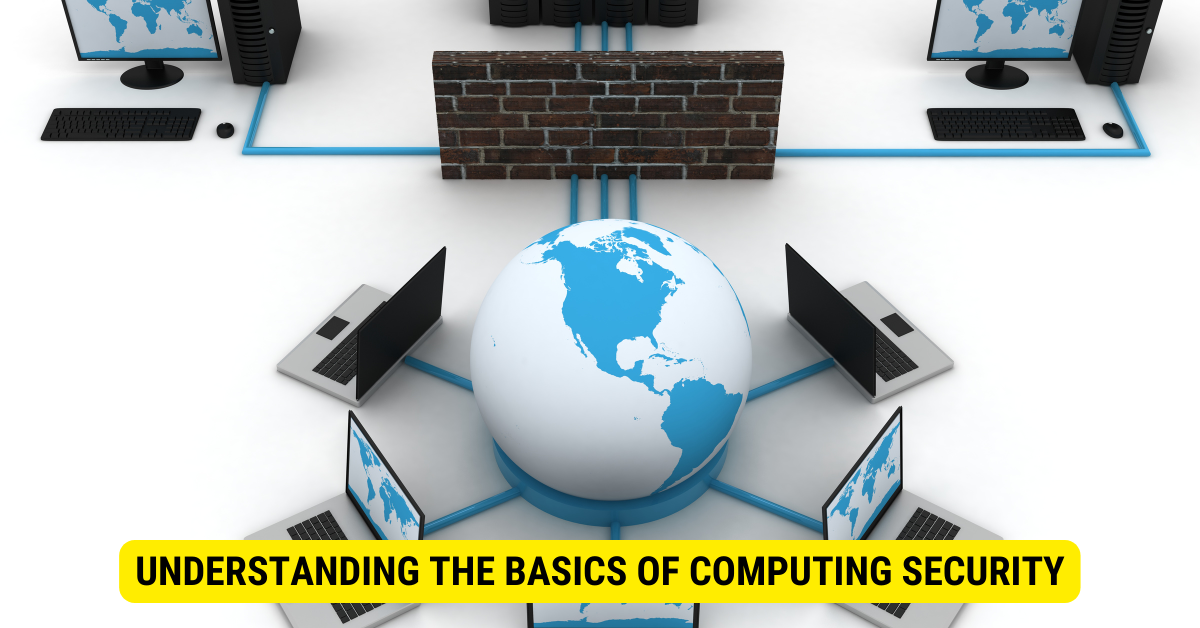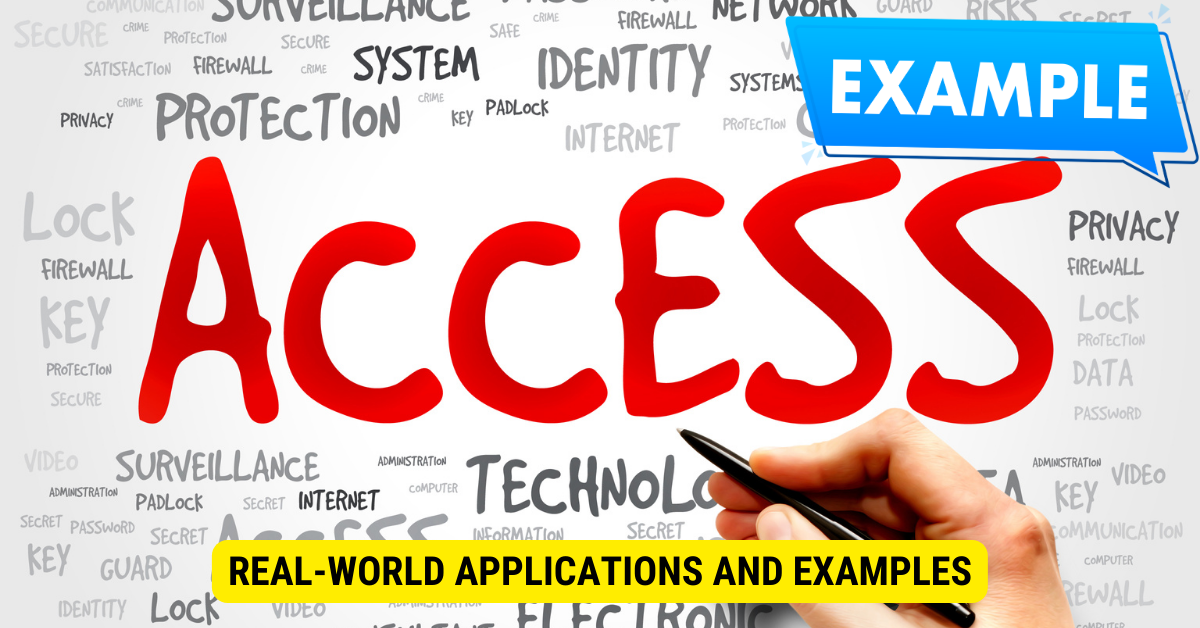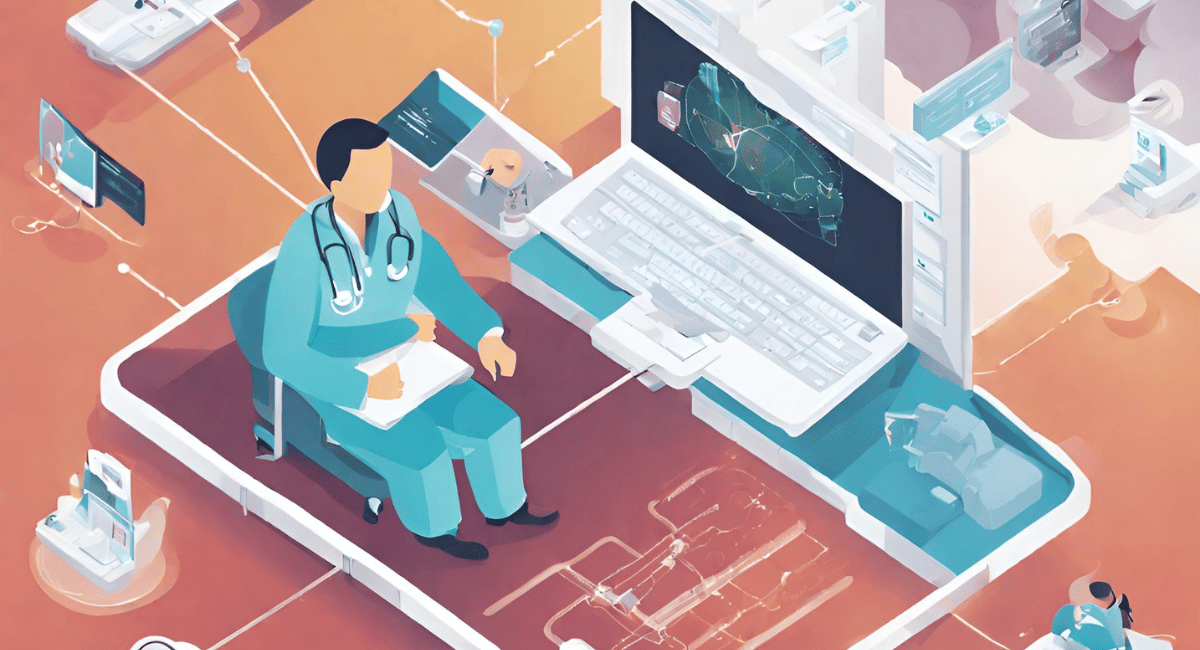The category of computing security that focuses on protecting and accessing data is “Data Security” or “Information Security.
In today’s interconnected world, our information systems’ security is paramount. But just what does ‘computing security’ mean, and what categories does it encompass? One such category involves access to data. We will examine this category of computing security that accesses data, its role, how it operates, its practical applications, and future prospects.
Understanding the Basics of Computing Security

Before we delve into specific categories of computing security, it’s essential to understand the basics. Computing security, or information security or cybersecurity, involves protecting digital data from unauthorized access, disclosure, disruption, modification, or destruction.
This field is crucial in maintaining the confidentiality, integrity, and availability of information, therefore playing a pivotal role in business operations, national security, and the smooth functioning of modern society.
Computing security encompasses a wide range of practices, technologies, and strategies that aim to safeguard data and ensure the secure operation of computer systems. It involves protecting data from external threats and addressing internal vulnerabilities and risks.
One of the fundamental principles of computing security is the concept of defense in depth. This approach recognizes that no single security measure can provide complete protection. Instead, multiple layers of security controls are implemented to create a robust defense system.
Definition and Importance of Computing Security
The broad definition of computing security applies – its primary objective is to secure data, the lifeblood of organizations and digital economies. It is as much about preventing unauthorized access as it is about facilitating authorized access, serving to safeguard sensitive information while ensuring its availability to the right people at the right time.
Without effective computing security measures, individuals, organizations, and governments are at risk of data breaches which can lead to devastating financial losses, damage to reputation, and even potential threats to national security.
One of the key aspects of computing security is the protection of personally identifiable information (PII). PII includes any data that can be used to identify an individual, such as names, addresses, social security numbers, or financial information. Safeguarding PII is crucial to prevent identity theft and other forms of fraud.
Moreover, computing security also plays a critical role in protecting intellectual property. In today’s digital age, businesses heavily rely on their intellectual assets, such as trade secrets, patents, and proprietary information. Failure to secure these assets can result in significant financial losses and competitive disadvantages.
Different Categories of Computing Security
Computing security can be divided into several categories, each focusing on various aspects of information protection. These include network security, application security, endpoint security, data security, identity and access management, and cloud security.
Network security involves securing the communication channels and infrastructure that connect computers and devices. It includes firewalls, intrusion detection systems, and virtual private networks (VPNs) to protect against unauthorized access and data breaches.
Application security focuses on securing software applications from vulnerabilities and exploits. It involves implementing secure coding practices, performing regular code audits, and using penetration testing to identify and fix potential weaknesses.
Endpoint security aims to protect individual devices, such as computers, laptops, and mobile devices, from security threats. It includes antivirus software, data encryption, and device management policies to prevent unauthorized access and data loss.
Data security is concerned with protecting data’s confidentiality, integrity, and availability throughout its lifecycle. It involves encryption, access controls, data backup, and disaster recovery plans to prevent breaches and ensure business continuity.
Identity and access management (IAM) focuses on managing user identities and controlling resource access. It includes authentication mechanisms, such as passwords or biometrics, and authorization policies to ensure that only authorized individuals can access sensitive information.
Cloud security addresses the unique challenges of securing data and applications in cloud computing environments. It involves implementing strong access controls, encrypting data in transit and at rest, and regularly monitoring for security incidents.
Each category has its unique focus, role, and techniques for protecting data and thwarting cyber threats. This article focuses on one such category – the one that involves data access.
Exploring Data Access in Computing Security
In computing security, data access is about managing and controlling who has access to what data within an organization. Secure data access is critical in the broader information security landscape.
Let’s delve deeper into this critical aspect of computing security and understand how it functions.
Role of Data Access in Security Measures
Secure data access acts as a gatekeeper, preventing unauthorized access to sensitive data while ensuring authorized users can access the data required to perform their roles. Through robust authentication methods and strict access control measures, secure data access allows organizations to manage who gets their data and to what extent.
Access control measures often comprise a combination of preventative, detective, and corrective controls to ensure comprehensive information security.
For example, preventative controls may include strong passwords, multi-factor authentication, and encryption techniques to protect data from unauthorized access. Detective controls, on the other hand, involve monitoring and analyzing access logs, intrusion detection systems, and security incident response mechanisms to identify unauthorized access attempts or suspicious activities. Corrective controls aim to rectify any security breaches or vulnerabilities that may have been exploited.
Implementing these controls helps organizations establish a layered defense mechanism, making it more challenging for attackers to compromise sensitive data.
Types of Data Accessed by Security Systems
Security systems typically access and manage different types of data, including personal, financial, and other sensitive information integral to an organization’s operations. Data access controls apply to all data, irrespective of where it is stored – on-premise databases, cloud-based systems, or mobile devices.
Personal data includes names, addresses, social security numbers, and other identifiable information. Financial data encompasses credit card details, bank account information, and transaction records. Organizations may also handle proprietary information, trade secrets, and intellectual property, which require stringent access controls to prevent unauthorized disclosure or misuse.
Proper data access management helps organizations comply with various regulations related to personal data protection and enables them to enforce their internal data governance policies effectively.
Furthermore, data access controls also play a crucial role in ensuring data integrity and confidentiality. By granting access only to authorized individuals or roles, organizations can minimize the risk of data breaches, insider threats, and unauthorized modifications to critical data.
Organizations employ various techniques and technologies to enforce data access controls, such as role-based access control (RBAC), attribute-based access control (ABAC), and mandatory access control (MAC). These mechanisms allow organizations to define and enforce granular access policies based on user roles, attributes, or security classifications.
Moreover, other security measures can complement data access controls, such as data loss prevention (DLP) solutions, encryption, and data masking techniques. These additional layers of security help organizations protect sensitive data even in scenarios where access controls may be bypassed or breached.
In conclusion, data access controls are vital for ensuring the security and privacy of sensitive information within an organization. By implementing robust access control measures and employing a multi-layered defense approach, organizations can effectively safeguard their data from unauthorized access, minimize the risk of data breaches, and comply with relevant regulations.
Deep Dive into the “Information Security”: Category of Computing Security that Accesses Data
Having defined and understood the broader context of data access within computing security, let’s delve deeper into this category and examine its dynamics.
In today’s interconnected world, where data breaches and cyberattacks are becoming increasingly common, it is crucial to have robust security measures in place to protect sensitive information. The data-accessing category of computing security plays a vital role in safeguarding valuable data from unauthorized access.
Detailed Explanation of the Category
The data-accessing computing security category primarily consists of “authentication” and “authorization.” Authentication verifies the user’s identity, ensuring only legitimate users can access the system. This process involves validating credentials such as usernames, passwords, or other authentication factors like fingerprints or facial recognition.
Once a user is authenticated, the next step is authorization. This determines what an authenticated user can do within the system. Authorization is based on predefined roles and permissions assigned to users based on their responsibilities and level of trust within the organization.
Managing data access involves creating, enforcing, and regularly updating policies to ensure that only internally or externally authorized parties can access the defined arrays of information. These policies are designed to balance providing access to the necessary data for legitimate users and preventing unauthorized access.
How this Category Accesses and Uses Data?
Data security systems employ various methods to access and protect data, often combining several techniques to create holistic security measures. One of the most commonly used methods is password-based access, where users must provide a unique combination of characters to authenticate themselves.
In addition to passwords, biometric data access has gained popularity in recent years. This method uses unique physical or behavioral characteristics, such as fingerprints, iris scans, or voice recognition, to verify a user’s identity. Biometric data access provides an extra layer of security, as these characteristics are difficult to replicate or steal.
Token-based access is another method used to access data securely. Tokens, physical devices, or software applications generate temporary authentication codes that users must provide to gain access. These codes are time-sensitive and unique for each login session, making it harder for attackers to gain unauthorized access.
Following successful authentication and authorization, data is accessed and used as defined by the user’s privileges. These privileges can range from read-only access, allowing users to view data but not make any changes, to full editing privileges, enabling users to modify or delete information within the system. The level of access granted to a user depends on their role within the organization and the principle of least privilege, where users are only given the minimum permissions necessary to perform their tasks.
In conclusion, the data-accessing category of computing security plays a critical role in protecting sensitive information from unauthorized access. By implementing robust authentication and authorization mechanisms, organizations can ensure that only authorized users can access and utilize valuable data, mitigating the risk of data breaches and maintaining their information’s confidentiality, integrity, and availability.
Real-World Applications And Examples

Data access plays an integral part in every information-based organization. It is employed in many ways, providing invaluable benefits and improving operational effectiveness.
Case Studies of Data Access in Computing Security

In the healthcare sector, for instance, secure data access protects sensitive patient data while allowing healthcare providers with proper authorization to access medical histories, test results, etc. Similarly, data access measures secure financial data in the finance sector while enabling seamless and secure transactions.
Organizations worldwide, irrespective of their size or nature of business, rely on secure data access mechanisms to safeguard their most valuable assets- their data.
Practical Uses of this Category in Everyday Computing
Data access isn’t only crucial for businesses; it plays an equally important role in our day-to-day digital interactions. From signing in to your email account, and making online payments, to uploading files on cloud storage, we’re accessing and sharing data secured by these systems.
Given this, it’s evident that secure data access is inseparable from our digital lives, underlying the smooth functioning of countless applications we use daily.
Future Trends in Data Access and Computing Security
As we embark on an increasingly digital future, data access and computing security will continue to grow in importance and sophistication. Expected developments in the field offer both exciting potential and daunting challenges.
Predicted Developments in the Field
AI and machine learning developments present promising enhancements to data access security measures. Advanced predictive algorithms capable of detecting suspicious behaviors and potential breaches before they occur are on the horizon.
Furthermore, evolving cloud and edge computing trends will likely affect how organizations manage, access, and secure their data.
How These Trends Could Impact Data Access and Security
While technological advancements present promising developments in data access and computing security, they also introduce new vulnerabilities. The increasing connectivity amongst devices in the Internet of Things (IoT) realm opens new avenues for cyber threats.
Therefore, maintaining a robust and efficient data access strategy requires staying abreast of these developments, adopting new technologies, and continually updating security measures to combat evolving threats effectively.
Key Takeaways
- Data Security is all about safeguarding digital information.
- It involves encryption, access controls, and backup solutions.
- Information Security encompasses both physical and digital data protection.
- This category addresses threats like breaches, unauthorized access, and data corruption.
- Regular updates and security practices are vital in data security.
FAQs
Q: What does Data Security aim to protect?
A: It aims to protect digital information from unauthorized access, breaches, and corruption.
Q: How does encryption help in Data Security?
A: Encryption transforms data into unreadable codes, accessible only with the correct decryption key.
Q: Is there a difference between Data Security and Information Security?
A: While closely related, Information Security is broader, covering physical and digital data protection, whereas Data Security focuses on digital information.
Q: What are the main threats to Data Security?
A: Unauthorized access, data breaches, and data corruption are primary concerns.
Q: How can one ensure good data security practices?
A: Regularly updating software, employing strong encryption, controlling access, and educating users about security risks.
Conclusion
In conclusion, secure data access is a pivotal aspect of computing security. Its role in safeguarding information and facilitating authorized access is indisputable. As we navigate this increasingly digital world, understanding, implementing, and enhancing data access security measures will remain a critical concern for organizations and individuals.
